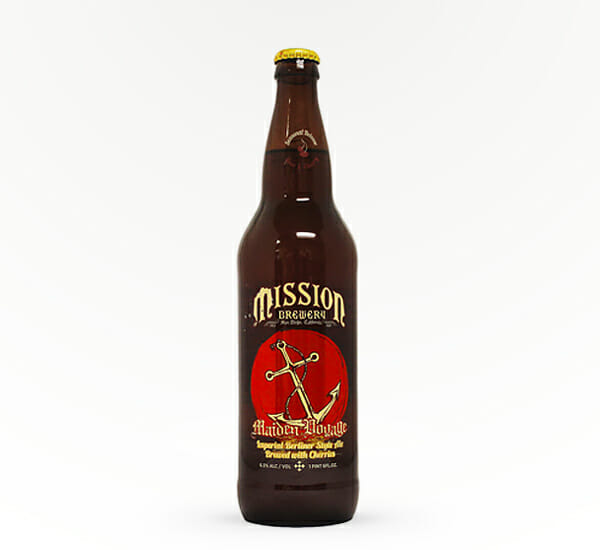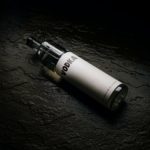Sour beers like Cantillon and Boon have existed for centuries, but these brands have always struggled to sell in the United States, especially after modern pasteurization techniques were introduced. In recent decades, specifically the 70s, the perception of sour beers has changed.
More and more drinkers are developing a taste for sour taste profiles, increasing the demand for this drink. Today, you can find an abundance of sour beer products on the shelf of your local liquor store.
One of the most prevalent forms of sour beer is the kettle sour. This drink is characterized by its dense, bitter flavor, often enhanced by fruity notes like blueberry, blackberry, vanilla, and lactose.
There are several ways to make a beer taste sour, but kettle sours brew faster than their traditional counterparts. The method of producing them, accordingly, is labeled “quick souring.”
In the world of sour beers, there is truly a no better choice to sip on than a kettle sour. To learn more about this trendy beer, keep reading below with Saucey.
Kettle Sours: an intricate production process
Regular sour beers take months and sometimes years to fully develop and mature. Kettle sours, on the other hand, are ready to be consumed within a few weeks.
This efficient production process is one of the leading factors why kettle sours have become so widely available recently; they’re easy to make.
As mentioned before, there are various ways to inject a sour flavor into a beer. What makes kettle sours unique is how it’s fermented and aged.
Lactic acid bacteria, or lactobacillus, are added before fermentation to meet the desired PH level. It is added while the wort is in the kettle, hence the drink’s name.
Lactobacillus is the same bacteria used to give yogurt its tart texture and helps form the shape of the kettle sour. It produces lactic acid, which speeds up the fermentation process dramatically.
Kettle sour beer contains a relatively simple, single-note acidity. To add more complex flavors to the drink, additional steps can be taken.
Typically, a stainless steel kettle or fermenter is used to age kettle sour instead of a standard wooden barrel. However, you can also age your beer in a barrel that once stored sour beer for extra flavor.
When a sour beer is emptied from a barrel, much of the souring bacteria is left behind. Instead of wasting this precious compound, this bacteria can be used to sour future batches.
You can also add fresh fruit to your mixture. There are several souring bacterias like lactobacillus and pediococcus that naturally live on the skin of fresh fruit. These can give a sour beer an even more complex flavor.
History of sour beer
Before refrigeration and pasteurization existed, all beer was basically sour beer. A small amount of bacteria naturally grows in beer, which gives it a slightly sour taste.
It was only in the late 1800s that brewers began to remove this bacteria. This became possible through the introduction of yeast purification. Over time, brewers continued refining this process.
In Europe, though, a lot of brands continued using this souring bacteria in their drinks. Unlike the Americans, many European brewers viewed sour beer as a delicacy. A lot of Europeans at the time even preferred sour beers over standard ones.
In addition to using lactobacillus in the fermentation process, European brewers began utilizing Brettanomyces and other wild bacteria to sour their beers. This tradition expanded as these bacterias became signifiers in the market for complex sour beers.
Cantillon is one of the companies that saw the value in these bacterias and implemented them into their recipes. They’ve been producing their traditional lambics since the late 17th century.
Notably, they foster an open or wild fermentation process using cool ships. During this process, the airborne bacteria are left alone to interact with the drink. This method of fermentation is used by several other breweries in Belgium as well.
What makes a quality kettle sour?
As the popularity of kettle sours continues to grow, many brands have begun releasing their own renditions of the drink. With so many options, how can the average consumer differentiate between quality products from cheap ones?
Well, we’ve got you covered. When shopping for kettle sours, one major sign you should look out for is how much oxygen was used when fermenting the product.
A quality sour beer is made by souring the drink anaerobically. This means that the drink was produced in the absence of free oxygen.
The presence of oxygen in fermentation can result in a range of off-putting flavors. The goal of every sour beer brewer is to ferment their product with as little oxygen present as possible.
Not all brands are transparent about their production process, but most of the time, the ones who take the extra steps to ensure a quality product tell you about it. If there’s no information about how the product is made on the bottle or on the company website, avoid it at all costs.
You should also look out for poorly made beers that rely on additives and sweeteners to achieve their flavor. A majority of the flavor should stem from the actual brewing process. It shouldn’t just be added in afterward.
Awesome kettle sour brands to try
Searching for a great sour beer? Look no further. Here are five solid options, fit for any occasion.
The Almanac Tropical Platypus is aged in used wine barrels and oak foeders, which gives this beer a sweeter palate than most other sours. It contains an array of tropical fruit notes and has a 6% ABV. It is brewed with Galaxy hops from Australia.
Mission Brewery’s Maiden Voyage Berliner Weisse is a rendition of the classic imperial Berliner adorned with cherries. It provides a delicate tartness, which fuses well with its fruity flavor. The balance of this drink, paired with its low alcohol content (5.1% ABV), makes it dangerously easy to drink.
There are few more established products in the sphere of sour ales than the Gose by Modern Times Beer. Their Fruitlands edition is packed with many delicious notes, including passion fruit, guava, sea salt, and tart citrus. However, this palate doesn’t overwhelm the natural sourness of the drink. This beer has an ABV of 4.8%.
For a more sophisticated sour beer, go for The Bruery Terreux’s Beret Sour Wit Ale. Many of the recommendations above contain fruity palates, but this beer sticks to centuries-old classic wheat taste. It is fermented with a witbier yeast strain and a collection of barnyard bacteria from the brand. This bacteria gives the drink a slight funk, which is offset by the taste of pureed raspberries.
Ever heard of an artisan sour beer? Well, now you have. The Straight or Unblended Lambic Sour Ale by Oude Beersel Kriek is made from real cherries and Oud Beersel lambic aged in barrels. The cherries are slowly absorbed into the lambic, which gives this drink a complex range of fruit flavors.
The takeaway
As we all know, Americans love their beer. As we’ve seen recently, Americans are starting to branch out about what flavors they enjoy, and they really love sours. From lagers to ales to stouts, the beer market is absolutely booming. Whether you like light beers, dark beers, or something in-between, there’s something out there for you.
Kettle sours are one of the leading styles of beer today. Marked by its balanced taste and unique production process, this beer has made a huge splash in the industry.
And as sour beers become more accessible, there’s no doubt that a wave of kettle sours will come with it. Next time you’re looking for something to sip on, try spicing things up a little and opting for a sour.
There are many wonderfully crafted sours on the market nowadays, and as this style of beer continues to grow in popularity, we’re bound to see more brands get in on the action.
For the broadest selection of sour beers on the market, visit Saucey. We stock nearly a hundred different types of sours from a variety of different brands. And best of all, we deliver it straight to your door.




